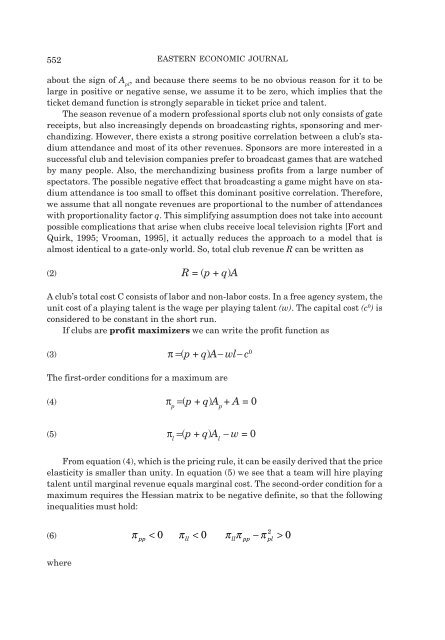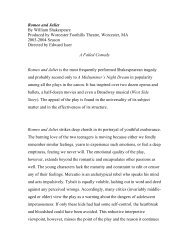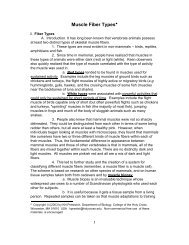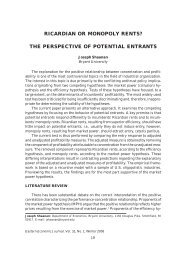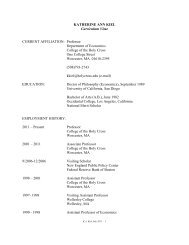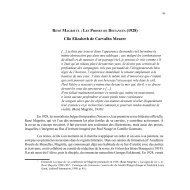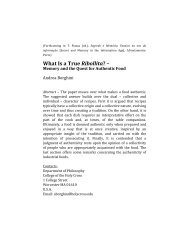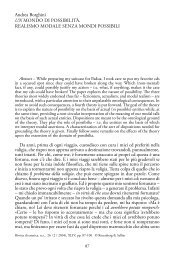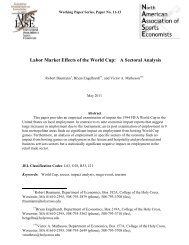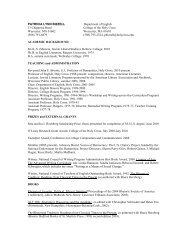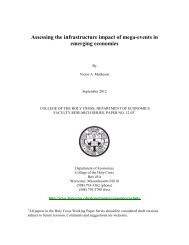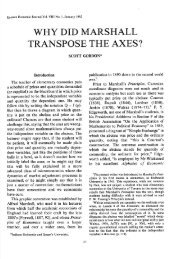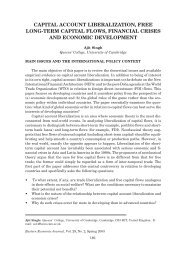club objectives and ticket pricing in professional team sports
club objectives and ticket pricing in professional team sports
club objectives and ticket pricing in professional team sports
Create successful ePaper yourself
Turn your PDF publications into a flip-book with our unique Google optimized e-Paper software.
552<br />
EASTERN ECONOMIC JOURNAL<br />
about the sign of A pl , <strong>and</strong> because there seems to be no obvious reason for it to be<br />
large <strong>in</strong> positive or negative sense, we assume it to be zero, which implies that the<br />
<strong>ticket</strong> dem<strong>and</strong> function is strongly separable <strong>in</strong> <strong>ticket</strong> price <strong>and</strong> talent.<br />
The season revenue of a modern <strong>professional</strong> <strong>sports</strong> <strong>club</strong> not only consists of gate<br />
receipts, but also <strong>in</strong>creas<strong>in</strong>gly depends on broadcast<strong>in</strong>g rights, sponsor<strong>in</strong>g <strong>and</strong> merch<strong>and</strong>iz<strong>in</strong>g.<br />
However, there exists a strong positive correlation between a <strong>club</strong>’s stadium<br />
attendance <strong>and</strong> most of its other revenues. Sponsors are more <strong>in</strong>terested <strong>in</strong> a<br />
successful <strong>club</strong> <strong>and</strong> television companies prefer to broadcast games that are watched<br />
by many people. Also, the merch<strong>and</strong>iz<strong>in</strong>g bus<strong>in</strong>ess profits from a large number of<br />
spectators. The possible negative effect that broadcast<strong>in</strong>g a game might have on stadium<br />
attendance is too small to offset this dom<strong>in</strong>ant positive correlation. Therefore,<br />
we assume that all nongate revenues are proportional to the number of attendances<br />
with proportionality factor q. This simplify<strong>in</strong>g assumption does not take <strong>in</strong>to account<br />
possible complications that arise when <strong>club</strong>s receive local television rights [Fort <strong>and</strong><br />
Quirk, 1995; Vrooman, 1995], it actually reduces the approach to a model that is<br />
almost identical to a gate-only world. So, total <strong>club</strong> revenue R can be written as<br />
(2) R = (p + q)A<br />
A <strong>club</strong>’s total cost C consists of labor <strong>and</strong> non-labor costs. In a free agency system, the<br />
unit cost of a play<strong>in</strong>g talent is the wage per play<strong>in</strong>g talent (w). The capital cost (c 0 ) is<br />
considered to be constant <strong>in</strong> the short run.<br />
If <strong>club</strong>s are profit maximizers we can write the profit function as<br />
(3) π =(p + q)A− wl− c 0<br />
The first-order conditions for a maximum are<br />
(4) π p =(p + q)A p + A = 0<br />
(5) π l =(p + q)A l − w = 0<br />
From equation (4), which is the <strong>pric<strong>in</strong>g</strong> rule, it can be easily derived that the price<br />
elasticity is smaller than unity. In equation (5) we see that a <strong>team</strong> will hire play<strong>in</strong>g<br />
talent until marg<strong>in</strong>al revenue equals marg<strong>in</strong>al cost. The second-order condition for a<br />
maximum requires the Hessian matrix to be negative def<strong>in</strong>ite, so that the follow<strong>in</strong>g<br />
<strong>in</strong>equalities must hold:<br />
2<br />
(6) π < 0 π < 0 π π − π > 0<br />
where<br />
pp ll ll pp pl


